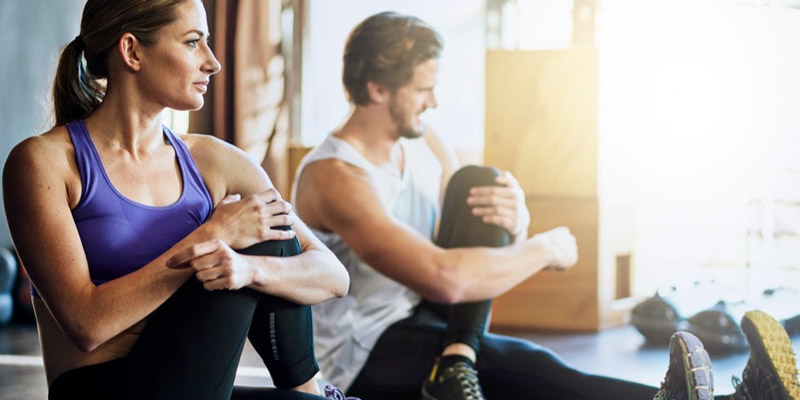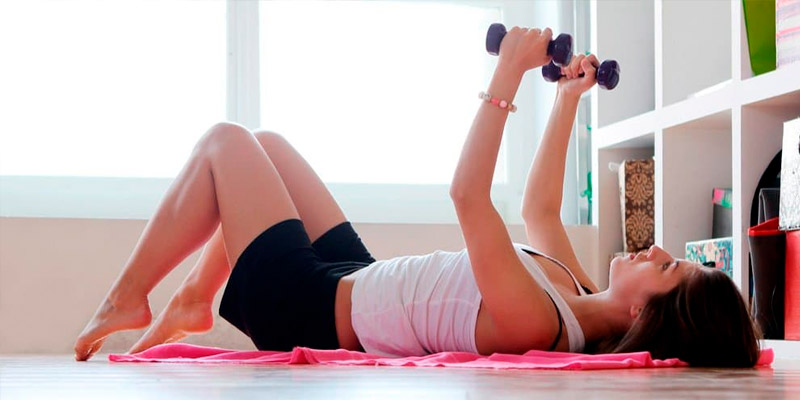A 10-Minute Stretching Routine

Loosening up tight lower-body muscles like your hamstrings and quads has huge implications for your workouts and your recovery. And adding in a lower-body yoga flow to your routine is a great way to reap those rewards.
Maybe you’re trying to perfect your form for a deadlift, but it feels like you can’t ease down into that hip hinge quite right. Or you want to improve your running speed, but you’re languishing on a plateau. While there are many factors that go into improving performance in strength or cardio workouts, loosening up tight lower body muscles can pay huge dividends in this.
So, how did those muscles get rubber-band-level tight in the first place? Sitting too much is a familiar culprit, according to London-based yoga teacher Jen Landesberg, RYT, an instructor on the fitness app EvolveYou. According to the American Council on Exercise (ACE), a whole lot of sitting puts your hamstring muscles in a shortened position, which can lead to that all-too-familiar sense of tightness. Your hip flexors—a group of muscles in the front of your body that includes part of your quads and your psoas—can tighten up too.
On the flip side, exercise can also lead to tightness. Cardio workouts, like running, and strength training—especially if you’re lifting heavier weights with compound movements like deadlifts or squats—can lead to delayed onset muscle soreness (DOMS), according to ACE. This soreness can lead to stiffness in your muscles, which can make your muscles feel tight. (DOMs in your quads and hamstrings is common after a lower-body workout, but if you feel sharp pain, or the discomfort doesn’t go away in a few days, be sure to see a physical therapist or a doctor.)
Yoga-inspired moves or stretches can be helpful to counteract this tightness—and it often doesn’t take long to see a difference, Landesberg says. Usually just a few poses a day totaling about 10 minutes of stretching can provide relief from muscle tension.
And that’s a benefit felt not only in your everyday life, but also during your workout: It can help boost exercise performance since it can allow your muscle groups to work more efficiently together, which also improves your range of motion. Plus, Landesberg says, easing this tightness through yoga-inspired moves helps improve joint mobility, increase blood flow to your muscles—helpful for recovery—and directly alleviate tension in your lower back and hips.
Landesberg created the four-move, lower-body yoga flow below specifically to loosen up your tight quads and hamstrings. You can try it as a standalone routine to break up time spent sitting, but it’s also really great for a cool-down stretch routine after a hard workout. By cycling through staples like the high crescent lunge, downward dog, low lunge, and lizard pose, you’ll loosen up your lower body and ease away all that tension.
The Flow
What you need: Yoga mat or a carpeted floor for good grip.
Poses:
- High crescent lunge
- Downward dog
- Low lunge
- Lizard pose
Directions
- Aim to hold each pose for 30 seconds—which is about five deep breaths. Flow from one pose to the next without resting. Do three rounds.

High Crescent Lunge
- Take a big step forward with your left foot to start in a staggered stance, with your feet almost mat-length apart.
- Bend your front knee and keep your back leg straight and heel lifted off the floor. Try to bend your front leg so that your thigh is parallel to the floor.
- Square your hips toward the front.
- Extend your arms toward the ceiling on either side of your head and stretch up as you also press into the mat and feel the stretch in your hips.
- Hold for at least 5 breaths or 30 seconds, and then repeat on the other side.
This pose stretches your hip flexors and quads.
Downward Dog
- From plank pose, lift your butt and press back into downward dog.
- Spread your fingers wide. Work on straightening your legs and lowering your heels toward the ground. If you’re extra tight in the legs, bend your knees a little to make the stretch more comfortable.
- Relax your head between your arms, and direct your gaze through your legs or up toward your belly button.
- Hold for 5 breaths or 30 seconds.
This move stretches the hamstrings and calves.
Low Lunge
- Take a big step forward with your left foot to start in a staggered stance, with your feet almost mat-length apart.
- Bend your front knee and keep your back leg straight and heel lifted off the floor. Try to bend your front leg so that your thigh is parallel to the floor.
- Square your hips toward the front.
- Extend your arms toward the ceiling on either side of your head and stretch up as you also press into the mat and feel the stretch in your hips.
- Drop your back knee to the floor, keeping the leg extended long and the shin flat on the mat.
- Hold for at least 5 breaths or 30 seconds, and then repeat on the other side.
Like the crescent lunge, this move also stretches your hip flexors and quads, but it should feel less challenging because your back shin is on the floor.
Lizard Pose
- From a low lunge, walk your left foot out wide to the edge of your mat. Place both your hands on the floor on the inside of your left foot.
- You can hold there if that's enough of a stretch for you. If you’re looking for a deeper stretch, you can place your forearms on the floor.
- For an even deeper stretch (pictured above) roll onto the outer edge of your left foot, letting your knee open away from your body. Keep your right hand on the floor for support, and use the left to gently press your left knee away from your body.
- Hold for at least 5 breaths or 30 seconds, and then repeat on the other side.
This move stretches the outer hip (adductor) muscles, including the gluteus medius, which provides relief to tight hamstrings.


